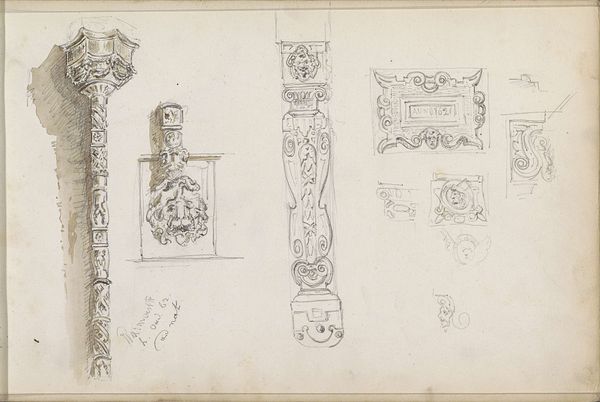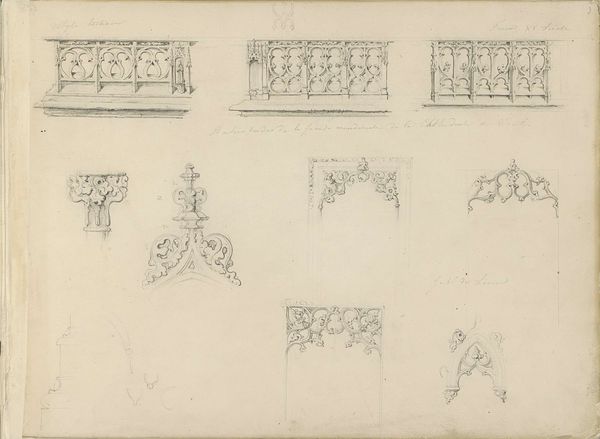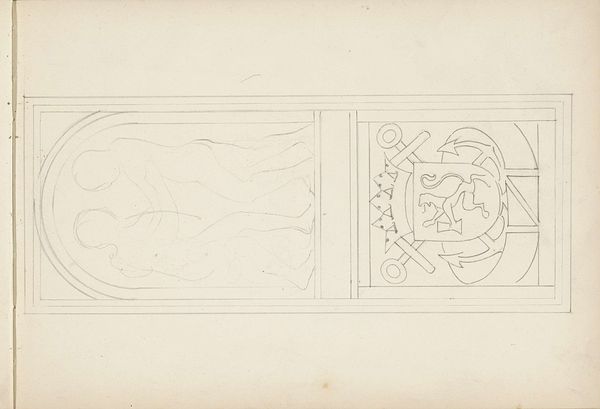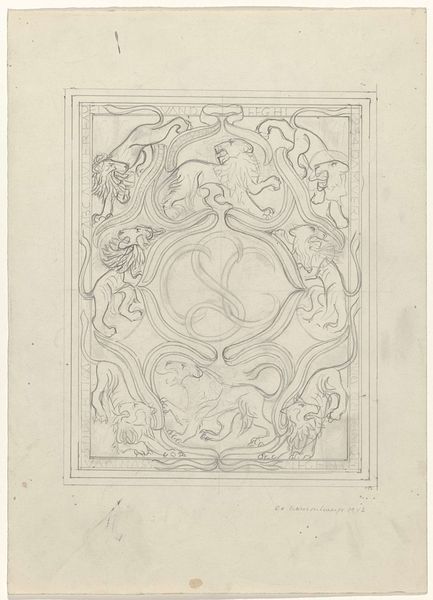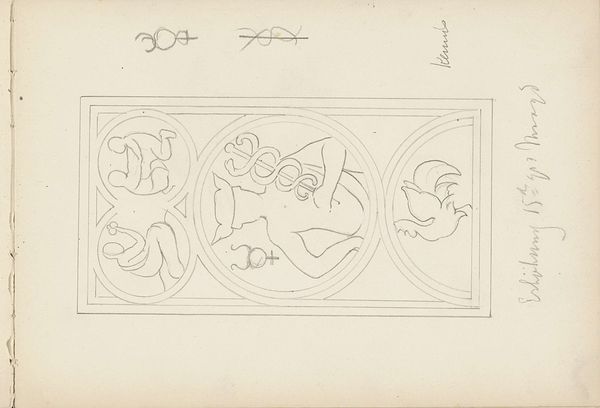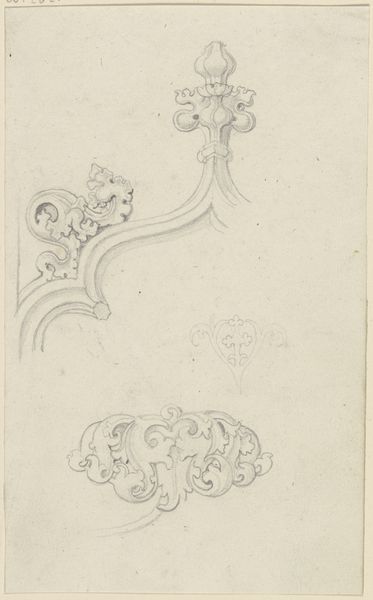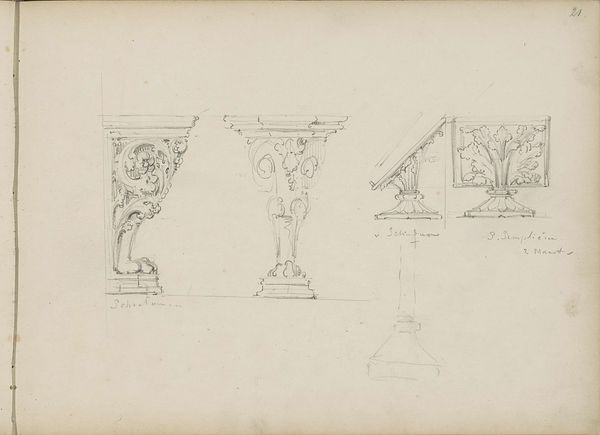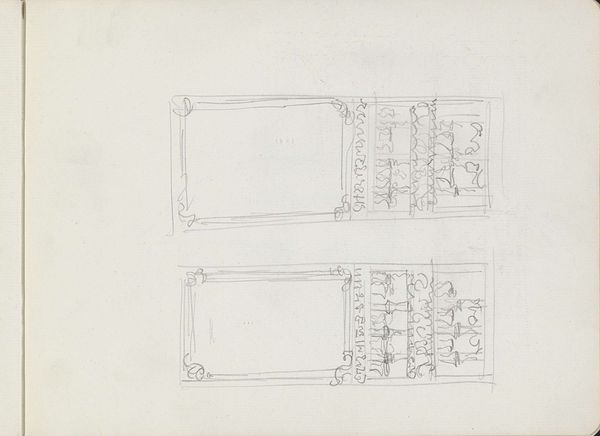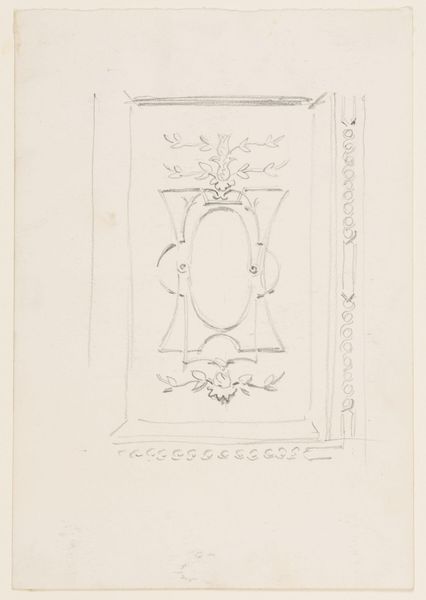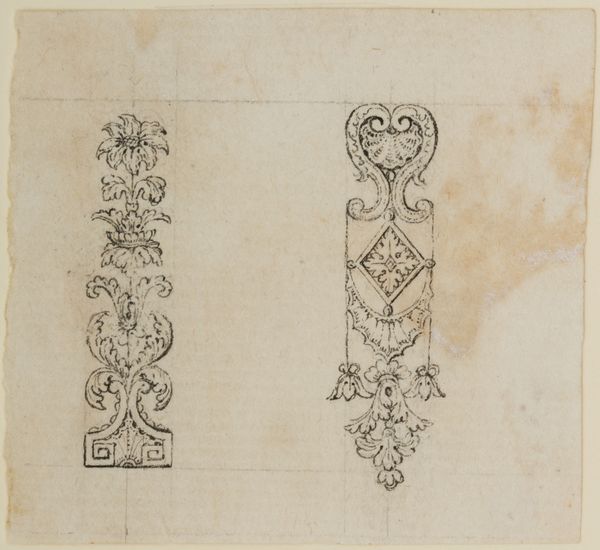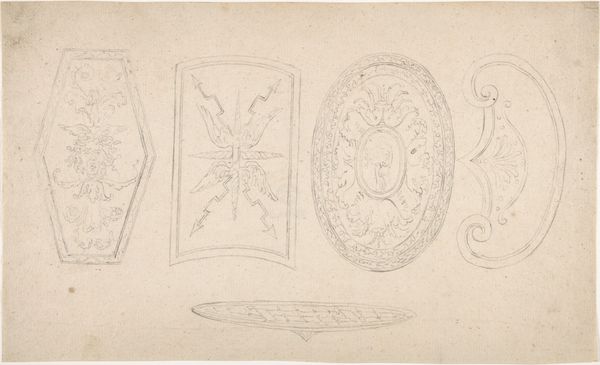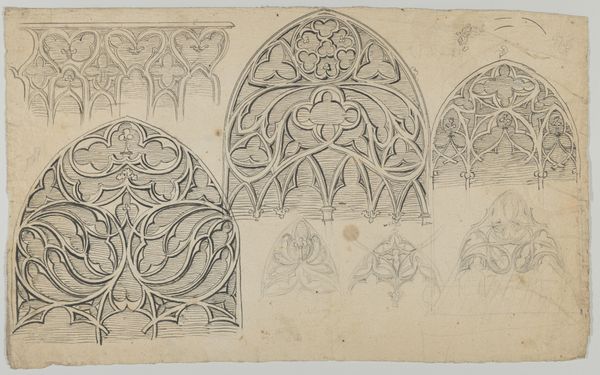
drawing, paper, pencil
#
drawing
#
comic strip sketch
#
book
#
paper
#
form
#
personal sketchbook
#
idea generation sketch
#
sketchwork
#
ink drawing experimentation
#
sketch
#
romanticism
#
pen-ink sketch
#
pencil
#
line
#
sketchbook drawing
#
storyboard and sketchbook work
#
sketchbook art
#
initial sketch
Copyright: Rijks Museum: Open Domain
Curator: Here we have "Geïllustreerde bladzijde en rocailles," or "Illustrated Page and Rocaille," a page from a sketchbook by Pierre Joseph Hubert Cuypers, dating from around 1850. It's currently held in the Rijksmuseum. Editor: Well, my immediate impression is… intimate. It feels like we're intruding on the artist's private thoughts, seeing these delicate pencil lines across the page. A sneak peek into the studio, if you will. Curator: Absolutely. This gives us a rare glimpse into the working methods of Cuypers, known for his role in designing many prominent churches in the Netherlands during the Gothic Revival. It shows a preliminary study and experimentation of form and decoration. Editor: And form is definitely at the forefront here. Looking at the rocailles – those shell-like, ornamental motifs – you can see Cuypers experimenting with the material, pushing the limits. Was it common at the time to blend architectural sketching with ornamental explorations in one’s sketchbooks? Curator: Sketchbooks such as this played a vital role in disseminating design ideas within architectural workshops, contributing to the professionalization of the architect as a distinct social figure. They served not only as a record, but also a mode for cultivating their aesthetic authority. Editor: It’s intriguing how a simple pencil and paper could hold such weight, culturally. Thinking about labor and materiality – these were precious materials. You wonder how Cuypers consumed paper, how much of this initial planning was considered disposable versus foundational. Curator: The social and cultural context surrounding the rise of such meticulous design processes in the 19th century marks the emergence of an industrialized system for artistic output, in a way… influencing perceptions of value and skill surrounding artists such as Cuypers. Editor: Precisely! I now look at the architectural page versus the ornamental sketches, I see both together speaking volumes about how artists bridged craft with the oncoming wave of industry during that time. The blend here emphasizes transition, which is so subtle. Curator: It's striking to see this connection now, with these sketches offering insight into that pivotal change that took place in architectural practices. Thank you for highlighting that perspective. Editor: And thank you. The process, as seen by means of this sketchbook work, really shapes our perception about not only how artistic labour takes shape, but even the place and the social position of the sketchers.
Comments
No comments
Be the first to comment and join the conversation on the ultimate creative platform.
